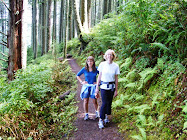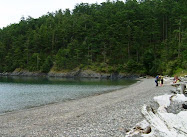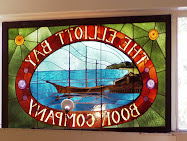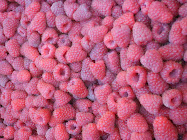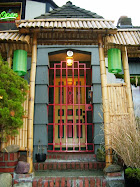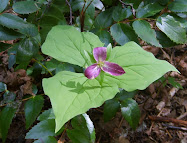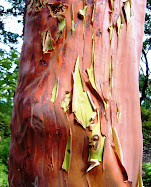The rainy season has arrived.
For the next 6 months+, our weather forecasts will be filled with clouds, rain, drizzle, maybe a little snow, a few sunbreaks, and likely even fewer sunny days.
But we wouldn't live here if we didn't welcome the rain, right? Many of us cheered its return, although I don't cheer the damp chill that comes with our rain. But it keeps this land west of the Cascades a perfect environment for temperate rainforests draped in moss and abundant fungi.
While digging through some boxes in my basement recently, I found a short piece I'd written years ago for my high school newspaper after a similarly dry fall. So here's my voice from the distant past, as printed in the Reynolds High School Royal Lancer:
Let there be rain...
Well, our weather is finally back to normal. After two fall months of unusually prolonged sunshine, our Oregon rain has begun its seasonal appearance.
Rain and Oregon have become synonymous in the past few years to the rest of the nation, thanks to the Oregon ungreeting cards. But we natives know that this is no new commodity to thwart tourism. Our liquid sunshine is as common to us as dirt to other states.
Even though everyone occasionally complains about the discomfort of soaking wet feet, one has to admit that it wouldn't be like home without our skies being frequented by drops of liquid moisture. [Ack! Did I really write that?]
A common but often overlooked sign is the simple beauty of droplets of rain clinging to a branch. Autumn leaves felled by the rain make for a more colorfully hued campus.
 | |||
| Raindrops on golden larch, Wallowa Mountains, Oregon |
 |
| Rain-downed leaves accumulating over a storm drain, Joseph, Oregon |
Let's face it...what would Oregon be without rain?
Ha, as I wrote those words, how could I have imagined that they would be available for anyone to read on something called the World Wide Web in the future?
But the point is this: We tolerate our rain, we complain about our rain, we hike in the rain, we endure our rain, we celebrate our rain, and we love our rain. Who doesn't feel extra cozy laying in a warm bed with the sound of rain pelting the roof and ground outside?
How do you feel about the rain? Love it? Hate it? Something in between?
Me, well, like I said, I love it. But that doesn't mean I won't feel compelled to slip away to the tropics or a southern desert for a winter break. :)




























